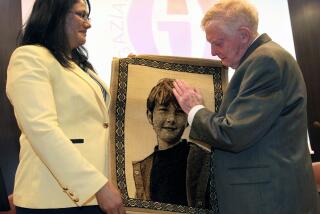Howard Green dies at 90; Harvard scientist developed technique for regenerating human skin
Dr. Howard Green, a Harvard scientist who made an accidental discovery that led to a method for regenerating human skin and saving the lives of severe burn victims, has died. He was 90.
Green’s technique involved taking a patch of skin the size of a postage stamp and, under meticulously controlled laboratory conditions, growing it into a sheet the size of a desktop. Risks of rejection fell dramatically because a patient’s laboratory-grown skin originated with the patient herself.
“The entire embryonic stem cell field is rooted in Green’s findings,” according to a statement Monday from Harvard Medical School, where he led the department of cellular and molecular physiology from 1980 to 1993. He continued doing research in his laboratory at the school until 2013.
Green died Oct. 31 after a long illness, his family said. He lived in a Westwood, Mass., retirement community.
Green became nationally known in 1983, when three boys in Casper, Wyo., were severely burned while roaming through a house that was being renovated. Just for fun, they had daubed themselves with paint. When they tried to scrub it off with lighter fluid, one of them struck a match, triggering an explosive fireball.
The two surviving boys — brothers Jamie and Glen Selby, 5 and 7 — were airlifted to a Denver hospital and then to the Shriners Hospital for Children in Boston. Green and his team had successfully done a few small, experimental procedures on burn victims but now mounted a desperate effort that was the boys’ only chance for survival.
Green turned his lab into a round-the-clock skin fabrication facility. The boys underwent lengthy operations and hundreds of grafts. It was an agonizing ordeal, but both survived into their late 20s.
Green had never participated in anything like it. But the boys’ condition was dire. Green was stunned when he saw them, burned everywhere but their armpits, the soles of their feet and the creases at the top of their thighs.
“I had no choice,” he later said. “I had to try.”
Born in Toronto, Canada, on Sept. 10, 1925, Green never sought to treat patients. He studied medicine at the University of Toronto so he could pursue medical research.
Green taught at New York University’s medical school from 1954 to 1970. He spent 10 years as a professor of cell biology at MIT before taking his position at Harvard.
While he was at MIT, he became intrigued by teratomas, tumors that can include partly formed teeth, bones, even hair. He and a graduate student, James Rheinwald, were studying them in mice when Rheinwald spotted keratinocytes — a basic building block of skin that had never been successfully raised in a culture.
The two managed to do it.
“Although it may seem unlikely that the study of a mouse tumor could lead to a treatment for burned humans, the two subjects were linked in a way that could not have been foreseen,” Green later wrote in Scientific American.
The mouse study led to experiments with human cells taken from the discarded foreskins of circumcised newborns. Growing them in a chemical broth atop a thin layer of certain irradiated cells from mice, they succeeded. And though Green later said he never saw himself as a scientist “concerned with practical problems,” he realized immediately that he and his colleagues were on the verge of an important discovery.
“Once you can grow vast amounts of human skin cells in culture, you have to ask yourself what you can do with them,” Green told the Harvard Gazette in 2010.
Using test-tube skin, they treated a few patients with small burns. Then, in July 1983, the boys from Wyoming arrived. Dr. Nicholas O’Connor, a Boston plastic surgeon, enlisted Green and his team.
“I knew that without our skin,” O’Connor told People magazine in 1984, “those kids didn’t have a hope in hell.”
Jamie had 150 grafts and his brother had 200. Half their skin was cultured in Green’s lab.
“Green had inadvertently developed a method for growing skin stem cells outside the body,” the Harvard Medical School statement said.
“Scientists later discovered that they could keep other types of stem cells alive by following Green’s example and cultivating them alongside fibroblasts. Researchers can now grow corneal stem cells, for example, which are used to restore sight in eyes that have been damaged by chemical burns.”
Green went on to form a company, BioSurface Technology, devoted to expanding his discovery. It was acquired by Genzyme in 1994.
Green’s survivors include Rosine Kauffmann Green, his wife of 61 years, and his brother Floyd.
Twitter: @schawkins
More to Read
Start your day right
Sign up for Essential California for the L.A. Times biggest news, features and recommendations in your inbox six days a week.
You may occasionally receive promotional content from the Los Angeles Times.







